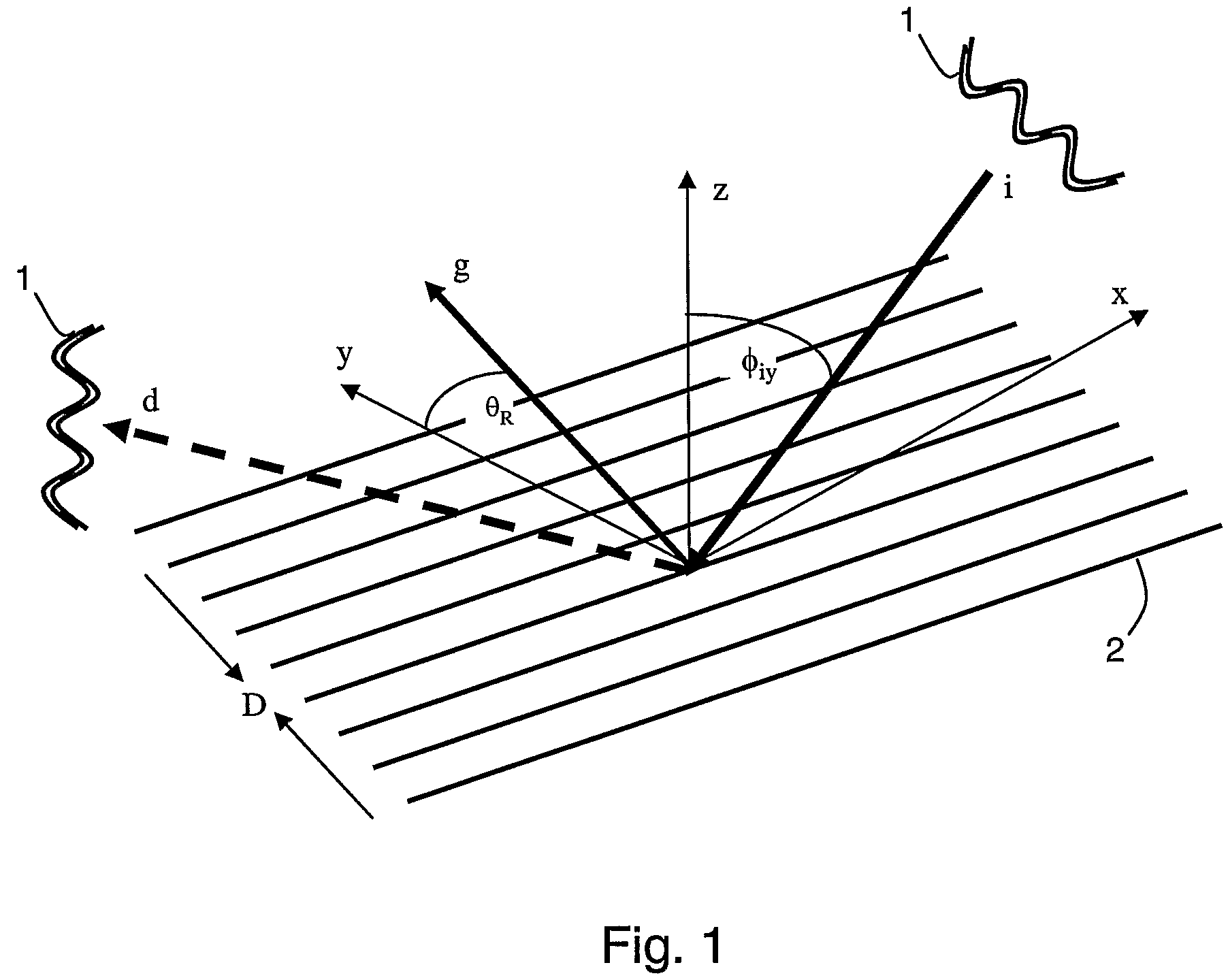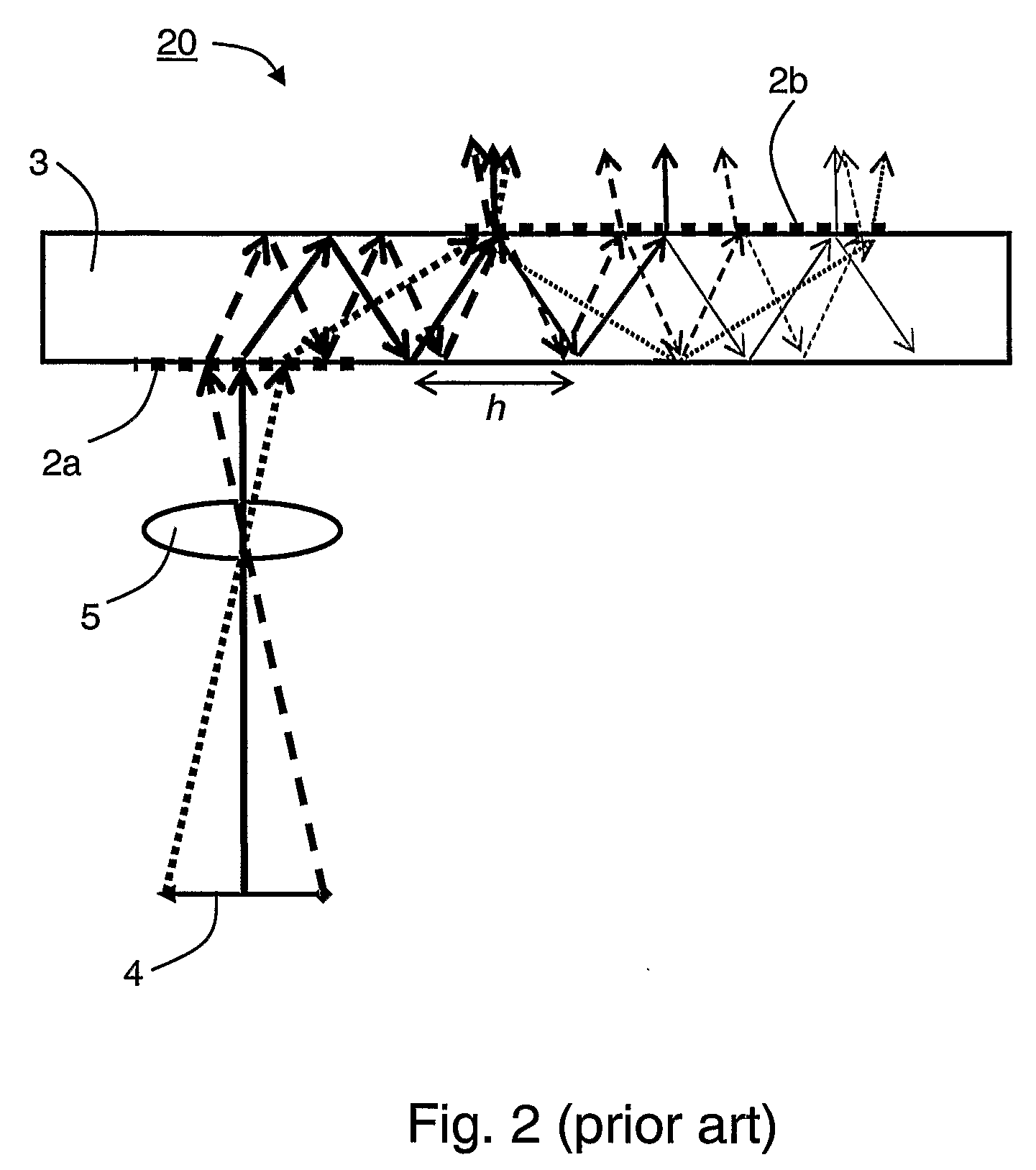Diffraction Grating With a Spatially Varying Duty-Cycle
a duty-cycle and diffraction grating technology, applied in the field of optics, can solve the problems of not being able to easily miniaturize, heavy crt display, heavy, etc., and achieve the effect of reducing the cost of operation, and improving the quality of operation
- Summary
- Abstract
- Description
- Claims
- Application Information
AI Technical Summary
Benefits of technology
Problems solved by technology
Method used
Image
Examples
example 1
Non-Uniform Duty Cycle
[0177]FIGS. 12a-d show numerical calculations of the diffraction efficiency of a grating as a function of the duty cycle, for impinging angles φiy of 50° (FIGS. 12a-b) and 55° (FIGS. 12c-d), and modulation depths 6 of 150 nm (FIGS. 12a and 12c) and 300 nm (FIGS. 12b and 12d). The different curves in FIGS. 12a-d correspond to wavelengths of 480 nm (solid line), 540 nm (dashed line) and 600 nm (dot-dash line). The calculations were based on the Maxwell equations, for 455 nm period grating formed in a light transmissive substrate having index of refraction of 1.53.
example 2
Non-uniform Modulation Depth
[0178]FIGS. 13a-b show numerical calculations of the diffraction efficiency of a grating as a function of the modulation depth δ, for impinging angles φiy of 50° (FIG. 13a) and 55° (FIG. 13b), and duty cycle of 0.5. The different curves in FIGS. 13a-b correspond to wavelengths of 480 nm (solid line), 540 nm (dashed line) and 600 nm (dot-dash line). The calculations were based on the Maxwell equations, for 455 nm period grating formed in a light transmissive substrate having index of refraction of 1.53.
[0179]As shown in FIGS. 13-a-b, the diffraction efficiency increases with increasing δ up to modulation depth of about 200-250 nm. Above about 250 nm, the diffraction efficiency decreases with increasing δ up to modulation depth of about 400-500 nm.
[0180]It is appreciated that certain features of the invention, which are, for clarity, described in the context of separate embodiments, may also be provided in combination in a single embodiment. Conversely, var...
PUM
 Login to View More
Login to View More Abstract
Description
Claims
Application Information
 Login to View More
Login to View More - R&D
- Intellectual Property
- Life Sciences
- Materials
- Tech Scout
- Unparalleled Data Quality
- Higher Quality Content
- 60% Fewer Hallucinations
Browse by: Latest US Patents, China's latest patents, Technical Efficacy Thesaurus, Application Domain, Technology Topic, Popular Technical Reports.
© 2025 PatSnap. All rights reserved.Legal|Privacy policy|Modern Slavery Act Transparency Statement|Sitemap|About US| Contact US: help@patsnap.com



